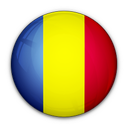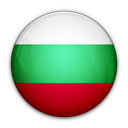
Protection for consumers and producers or questions with more than one answer
The Ordinance for specific requirements for dairy products introduced new requirements for them and for the imitating them, containing milk in their composition, as well as requirements for the producers and merchants of these products and their labeling. The idea is to regulate and limit the use of powdered milk and vegetable fats in traditional dairy products and to provide in such a way greater protection of both consumers and Bulgarian producers. However, a number of issues and challenges have been simultaneously put to the traders and manufacturers of both kinds of products.
Different treatment of domestic and foreign production
In the first place, this is the requirement that the new rules apply only for products, produced and offered on the Bulgarian market. For products, produced outside the country, but offered here, only the rules for translation of the names are applicable. This raises the question of a discriminatory treatment of imitating products, produced locally and those products, produced outside the country. Under the Ordinance, the local products must not contain any dairy names as images of milk, cheese and must be sold on individual stands. At the same time, the imitating products, made outside the country, have to be sold alongside local dairy foods, as long as the word “milk” or “milk names” such as cheese, butter, cream, etc., reserved only for dairy products (“milk names”) are not presented in the name of the foreign products. Is not there any danger of confusing the two types of products and of deceiving, accordingly injuring the local producers, who have to follow the more stringent restrictive rules? On the other hand, does the mentioned passive rule mean that a product, traditionally known as cheese, produced in the European Union, but containing vegetable fat, cannot be sold in Bulgaria under its usual name, but has to be called a product with vegetable oil, blue delicacy and others? Does this not lead to greater consumer confusion, thinking that cheese as part of the name is commonly used for this type of products and its composition and origin are known, which does not require a change of its name?
In this connection, it has to be mentioned that Council Regulation №1234/2007of 22 October 2007 establishing a common organization of agricultural markets and on specific provisions for certain agricultural products incorporated into the Ordinance, provides the possibility of an exception to the milk names. This exception was regulated by the repealed Ordinance for specific requirements to the names and labeling of milk and dairy products on the market, and the exception allowed the use of those mentioned names for imitation dairy products, which they are traditionally used for and their origin and composition are known, as well as the use of these terms in describing the characteristic quality of the product. Although the exception is not presented in the new ordinance, it applies under the Regulation, and Bulgaria can send a list with the names, which it considers as falling under the exception on the territory of the country to the European Commission.
Unclarities about dairy products
There are also unclear moments about the listed in the Ordinance milk names, which, as stated, can be used only for diary foods and drinks. These are whey, butter, cheese, yogurt, kefir, koumiss, cheese, cottage, yellow cheese (“kashkaval”), buttermilk, casein, dehydrated milk fats, fruit and/or flavored, and/or concentrated dairy products, as there are specified requirements that must be met for each one, in order to be referred in the mentioned order. For example, yellow cheese (“kashkaval”) is used for a type hard cheese, suffered under cheddaring and vapors compressed curd. If this is not met, the product cannot be considered as dairy product and cannot be called “kashkaval”. There arises the question whether the ayran for example, which was excluded from dairy names with the amendments as of 4.01.2013, can contain vegetable fats. Do not the new rules deviate from their purpose to protect the health of the consumers by using vegetable fats in traditional dairy products. But what is a dairy product – this name should be used for a product, exclusively derived from milk, with the understanding that there can be additional substances, necessary for its production, provided that these substances are not used for replacing, in whole or in part, any milk ingredient. However, it is possible for dairy products to contain up to 20% dry milk, but above this percentage the product is already imitating and not a dairy product. In the latter, the addition of fats and protein with non-milk origin is prohibited, except gelatin, which can be added for a technological purpose in the yogurt, in fruit and/or concentrated dairy products.
Requirements for imitating products
The requirements for imitating products are also interesting. They are defined as products, analogue of the milk ones, listed above, in which the milk ingredient is replaced by a partial or complete substitute such as fat and/or protein of non-milk origin. This provides a clarification of the scope of the Ordinance and in particular that the described already cheese, “kashkaval”, yogurt, etc. made however from milk and vegetable fats, fall under the new rules. Accordingly, it follows that the ice cream, for example, does not fall within the Ordinance, unless it is called milk ice cream. The milk ice cream should not contain vegetable fats, but only the legally permitted diary ingredients. It was also mentioned that the name of the imitating products should not contain the word “milk” or milk names. This means that a spreadable product for example, containing milk and vegetable fats, cannot be called cream-cheese, but rather spreads cream with vegetable fats or otherwise, but compulsory without the word “milk, cheese, cream” etc. It is not allowed the imitating products to contain in their name the label and any form of advertising or performance specifications that indicate or suggest that they have the characteristics of milk or a dairy product. Moreover, as it was mentioned, only the foreign products must meet the Ordinance’s requirements for the name. The Ordinance’s other provisions only apply for the domestic products. In this example, if the spreadable product is not Bulgarian, and is named correctly, this should mean that its package or its advertising can contain pictures of milk or a dairy product, since the ban to avoid milk names does not apply to it. A misleading could be potentially claimed under the Consumer Protection Act, but if the food ingredients are listed on the label and it is labeled correctly, this would hardly lead to any sanctions.
However, the word milk and milk names can be used in the imitating products, but only in order to explain the basic raw and ingredients, they are made of. It is important to be noted that the imitating products must be placed on individual stands on the market, clearly labeled “Imitating products, containing milk in their composition”. This should provide greater recognition by consumers which products are made of pure milk and which ones contain vegetable fats, such as palm oil, for example.
Also new is the requirement that the producers of milk and dairy products, who cut and repackage milk and dairy products, cannot produce, cut and repackage imitating products on the territory of an enterprise at the same time. This rule is also seen controversially, because, on the one hand, it guarantees a separation in the production of dairy and imitating products, but – on the other hand, it restricts the activity of the Bulgarian dairy enterprises, which will have to build another enterprise in order to continue producing dairy products and their cheaper analogues.
The article has been published in Bulgarian, in Capital Daily.





